Spheres Of Consciousness
Square the Circle
With an unpretentious approach to existential questions, Finnish filmmaker Hanna Hovitie offers a perfect example of what humility can do in art.
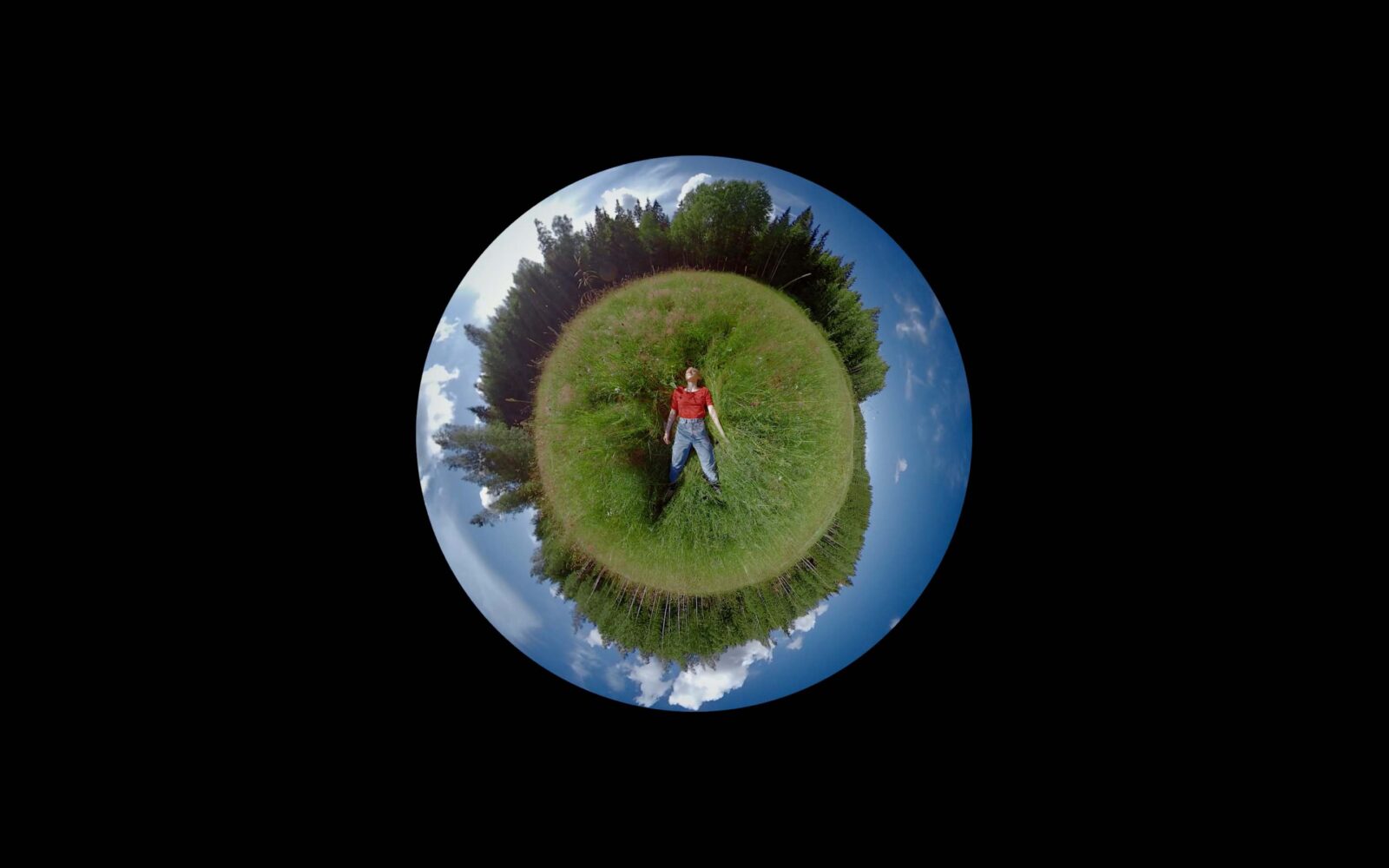
Like a rolling marble that catches your eye, Hanna Hovitie’s film is a world onto its own. Formally ingenious, Square the Circle is a journey of poetic introspection that develops its own simple yet singular language. A marvel of thoughtfulness, the film’s quiet power outlasts each viewing.
Against much of contemporary essayistic cinema that loses itself in rambling narcissism, Hovitie’s soul-searching is couched in a humble and humorous first-person: the film spins on the axis of a female voice, as its maker ponders existential dilemmas in soft-paced Finnish. Hovitie is here a director, narrator, and lead character, her confessional commentary the verbal counterpart to a wandering body engaged in the meditative survey of snowy expanses, runs through fields, and stargazing.
Set into motion with a bit of motherly advice, the film opens with an intertitle that immediately elicits a smile: “‘Surely you’ll find your place.’ – Mom” Hanna’s quest begins, and ruminations on belonging and purpose come to us in analogies borrowed from elementary principles of geometry and mathematics. Yet mathematics is an infinite subject and our director-poet is quickly overwhelmed by the scope of her problems. Two-dimensional animations appear, drawn by an invisible hand on what looks like a chalk blackboard, and when a simple circle morphs into a revolving sphere, we understand that the circle, like the self, is haunted by the abyss of infinite time and space. Hanna issues her own diagnosis: she suffers from “space anxiety,” a form of nausea that arises from her inability to contemplate the infinite.
Damn, girl. To the rest of us, the self is an equation hard enough to solve without the added weight of such metaphysical considerations. Only, this is part of the film’s comic conceit: minor anxieties are blown up into cosmic-sized problems before these are punctured with aphoristic asides.
The seasons provide Hovitie’s inner journey with a convenient metaphorical architecture: long days of Nordic darkness become the expression of an anxious soul while the sun’s return provides scenes of emotional respite. Yet the fears she voices are not simply the outcome of Nordic geography or weather. At times, Hovitie seems to speak for an entire generation, weary of the punishing tempo of twenty-first-century life: “I’m a slow person,” she tells us, “I need an eternity just to eat a sandwich.” And levity works best to keep existential angst in check: “I’ll peak when I’m a granny,” she affirms, as evocative electronic music chimes in, elevating the thought into the promise of future geriatric bliss.
In a move as canny as it is simple, the framing device throughout is a circular cache, its rotundity magnified by a strong fisheye lens. Landscapes and figures are reconfigured to suit its radius and its metaphorical value moves playfully, from an iris, to a bubble, to the whole of our blue-green planet. Even the subtitles obey to its gravity, a constant smile of thought under the orb that is the image.
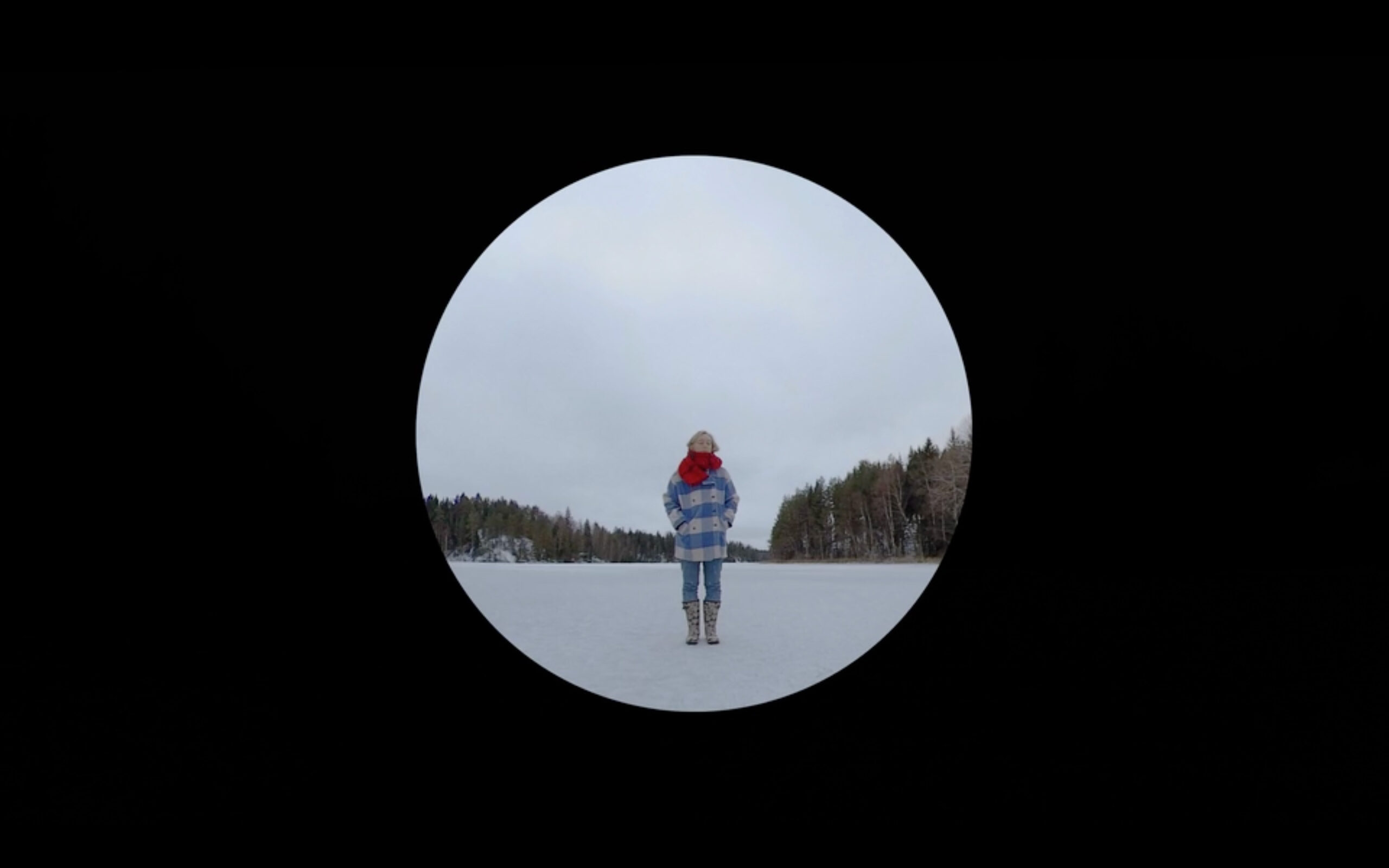
Square the Circle
Renaissance artists made much of spheres and circles: Leonardo’s Salvator Mundi (1499-1510) has Christ calmly holding the entire cosmos within five barely outstretched fingers, while the limbs of Da Vinci’s Vitruvian Man are gingerly stretched out to touch both square and enclosing circle. For these male artists, these geometrical forms were ideal illustrations of the spiritual and moral perfection we were to strive for. Hovitie draws a different picture. Hers is a secular perfection and one that tends towards the paradoxical: she is, she confesses, a “procrastinating perfectionist,” who finds beauty in the flawed and the imperfect.
The lyricism of her earthly wanderings conveys this too, her voice rising amid an ever-evolving natural landscape. In that, the tone she strikes is reminiscent of American Transcendentalists like Ralph Waldo Emerson and Henry Thoreau. In “Nature,” Emerson presented his poetic endeavour as such: “I am a transparent eyeball / I am nothing / I see all.” Hovitie’s ego is not as expansive, nor is her dissolution of the self so complete, while the business of being an all-encompassing eye she deftly leaves to the camera.
After standing still to contemplate the nature of Time, she resumes her journey, and the world begins to turn in lockstep, a giant hamster-wheel of grass, pines, and sky above her. But it spins so fast she has to run and tumbles into the tall grass. Only there is no loss of dignity here, no sense of shame; she is just another small human, seeking meaning and purpose on the great big ball that is the world.
A final instance of this vulnerability comes when Hanna’s solitude is suspended long enough to welcome the film’s only other character: an elder passerby laden with grocery bags. He walks up to her and peers into the camera, his face and body distorted by the lens: “Aha, what are you doing here?” he asks, “I’m not sure,” comes the reply. The man walks away, leaving our poet to stand alone on the hard round earth. Such gentle inquiries and hesitations are integral to the film’s beauty, held together by a confessional mode that reminds us that soul-searching need not be a melancholy or complacent affair.
With her unpretentious approach to existential questions, Hanna Hovitie offers a perfect example of what humility can do in art: here is poetry of the cyclical, the circular, and the spherical that manages to avoid the solipsistic. This is a feat in itself, but it is all superseded by something rarer still: when it comes to grace, consider the circle squared.

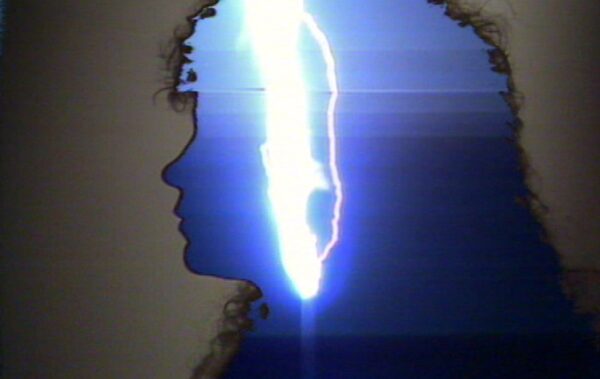
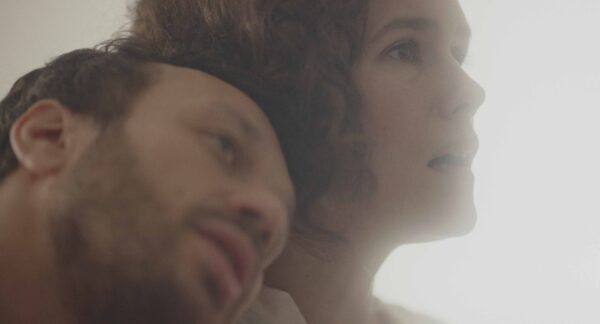
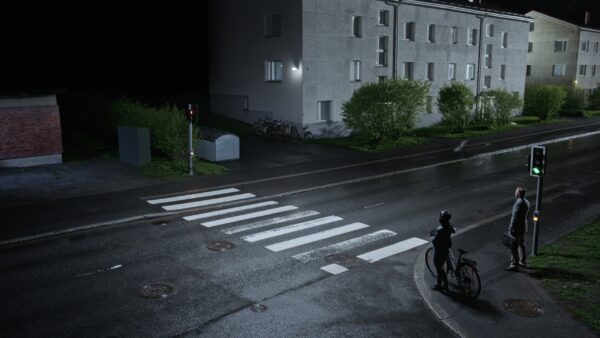
There are no comments yet, be the first!